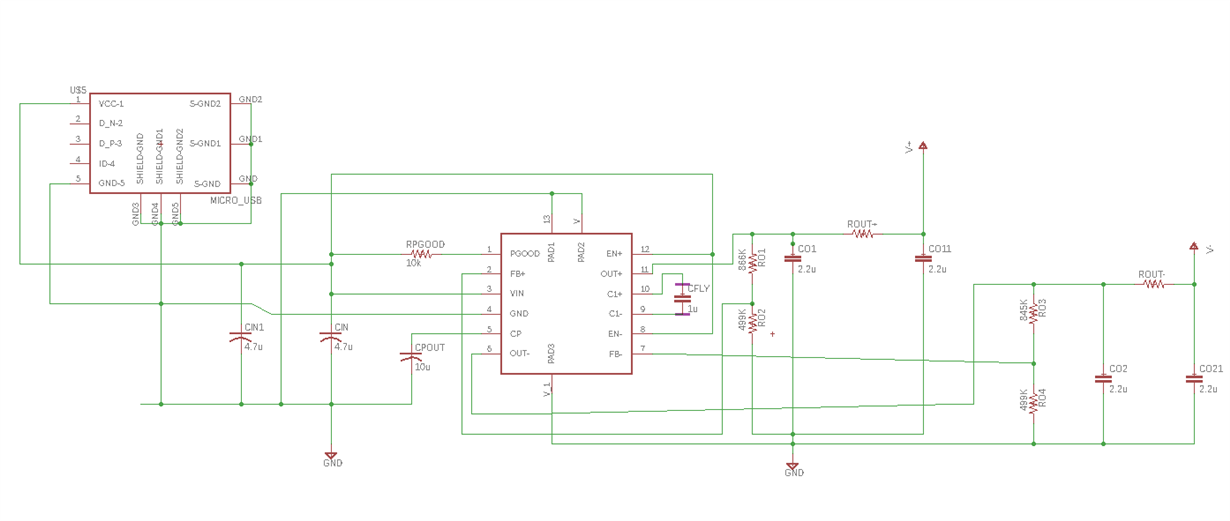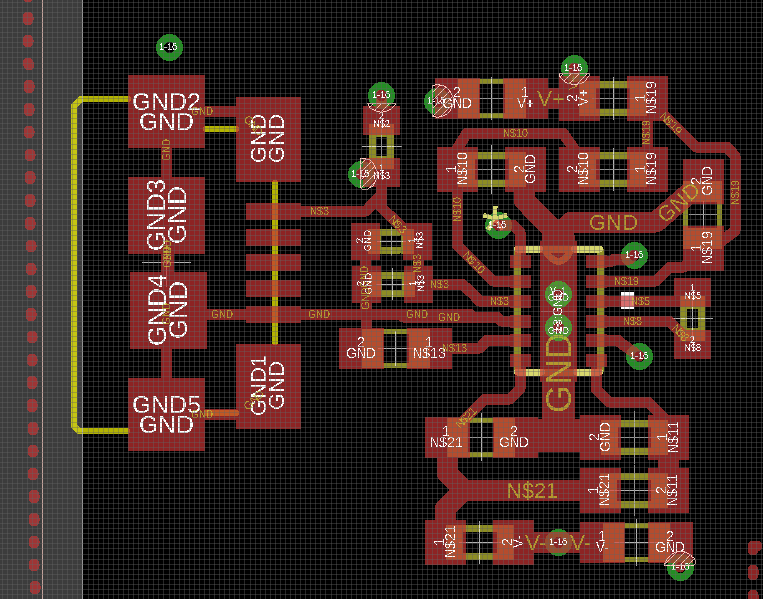Tool/software: WEBENCH® Design Tools
I have made a PCB that use a LM27762 to transfer 5V to positive and negative 3.3V voltage. I have soldered whole board and it worked good at first.
But yesterday, after about 3 hours working, it failed. The positive voltage is +4.8V and the negative voltage is +3.3V. The board is quite hot. Was it damaged by the high temperature? The voltage wave of Cfly and Cpout is flat and there is no oscillation. The input voltage is 5V.
Is the LM27762 so fragile? I have to install a fan or cooler on it? The schematic and PCB layout is showed below.
Thank you for your help and very appreciated.




